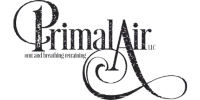
Can Myofunctional Therapy Help Sleep Apnea Without CPAP?
Can Myofunctional Therapy Really Improve Sleep Apnea Without CPAP?
For millions of people dealing with obstructive sleep apnea, the nightly ritual of strapping on a CPAP mask can feel frustrating, intrusive, and unsustainable. The machine’s loud hum, facial discomfort, and reliance on power often discourage consistent use. But what if an alternative approach focused on facial muscle function and breathing retraining could offer similar results?
Orofacial Myofunctional Therapy is gaining traction as a natural, muscle-based intervention for improving sleep-breathing disorders. This article explores how this therapy works, what it can and cannot do, and whether it truly offers hope for people who struggle with CPAP intolerance.
Why Is Mouth Breathing During Sleep Such a Problem?
Mouth breathing at night is more than a habit. It’s a red flag indicating poor tongue posture, weak oral muscles and potential airway obstruction. People who breathe through their mouths while sleeping often wake up with dry mouths, sore throats, fatigue and poor cognitive function. Over time, this breathing pattern can worsen issues like snoring, speech development problems and obstructive sleep apnea.
Sleep apnea occurs when the airway becomes partially or fully blocked during sleep, leading to repeated pauses in breathing. CPAP (Continuous Positive Airway Pressure) machines are the gold standard for treatment. However, studies show that nearly 50 percent of patients fail to use their CPAP machines consistently, citing discomfort and inconvenience.
The Hidden Toll of Ignoring Mouth Breathing and Sleep Apnea
If left unaddressed, mouth breathing and untreated sleep apnea don’t just rob you of quality sleep they also carry long-term health risks. Chronic fatigue can spiral into poor work performance, increased accident risk and even depression. From a physiological perspective, persistent airway obstruction can elevate blood pressure, increase the risk of stroke, and strain the cardiovascular system.
In children, the impact is even more concerning. Mouth breathing during developmental years is linked to altered facial growth, poor dental arch formation, and delayed speech development. Many children are misdiagnosed with ADHD when in fact they are simply sleep-deprived due to poor breathing patterns.
How Orofacial Myofunctional Therapy Works
Orofacial Myofunctional Therapy (OMT) is a specialized form of therapy that retrains the muscles of the face, tongue and mouth. Its goal is to establish proper tongue posture, nasal breathing, and coordinated oral functions. When the tongue rests against the roof of the mouth and breathing shifts to the nose, the airway is naturally supported during sleep.
Certified orofacial myofunctional therapists create personalized exercise programs that target:
Tongue posture and strength
Facial muscle function for optimal lip seal
Swallowing patterns and oral rest posture
Breathing retraining through nasal exercises
When combined with Buteyko Breathing Techniques, which focus on gentle nasal breathing and CO2 tolerance, the results are often profound. Patients report improved sleep quality, reduced snoring and in some cases, significant reduction in apnea episodes.
What Does the Research Say?
A 2020 study published in the Journal of Otolaryngology – Head & Neck Surgery found that orofacial myofunctional therapy can reduce sleep apnea severity by up to 50 percent in adults and 62 percent in children when used consistently. While OMT is not a replacement for CPAP in severe cases, it can complement or, for some, gradually replace mechanical interventions.
Another 2022 review in Frontiers in Neurology highlighted OMT’s ability to improve muscle tone in the upper airway, reduce collapsibility, and promote sustainable nasal breathing habits.
Integrating Myofunctional Therapy at Primal Air
At Primal Air, we combine the science of Breathing Retraining and Orofacial Myofunctional Therapy to address the root causes of sleep-disordered breathing. Our team focuses on:
Strengthening oral and facial muscle function
Teaching clients how to use Buteyko Breathing Techniques for nighttime calm
Educating on correct tongue posture and lip seal for proper airway support
Offering customized home exercise programs to reinforce healthy habits
For clients who struggle with CPAP, OMT can be a vital part of a broader solution not a replacement, but a foundation for long-term improvement. In mild to moderate sleep apnea, particularly when caused by poor oral habits, OMT may reduce the need for devices entirely.
Is Myofunctional Therapy a Replacement for CPAP?
Not always. Severe sleep apnea still requires clinical monitoring and possibly CPAP support. But for many people, especially those with mild or moderate sleep apnea, chronic mouth breathing or underdeveloped oral muscles, myofunctional therapy offers a powerful and non-invasive solution.
It is not a quick fix, but with consistency and guidance from certified orofacial myofunctional therapists, real change is possible. At its core, OMT helps restore the body’s natural ability to breathe, sleep and function all without relying on machines.
Ready to Breathe Better?
If you're tired of relying on CPAP or want to understand the root cause of your sleep disruptions, Orofacial Myofunctional Therapy might be worth exploring. At Primal Air, we’re here to help you breathe the way nature intended.
Discover how to Identify Orofacial Myofunctional Disorders and how Orofacial Myofunctional Therapy can help - read our recent article here...

